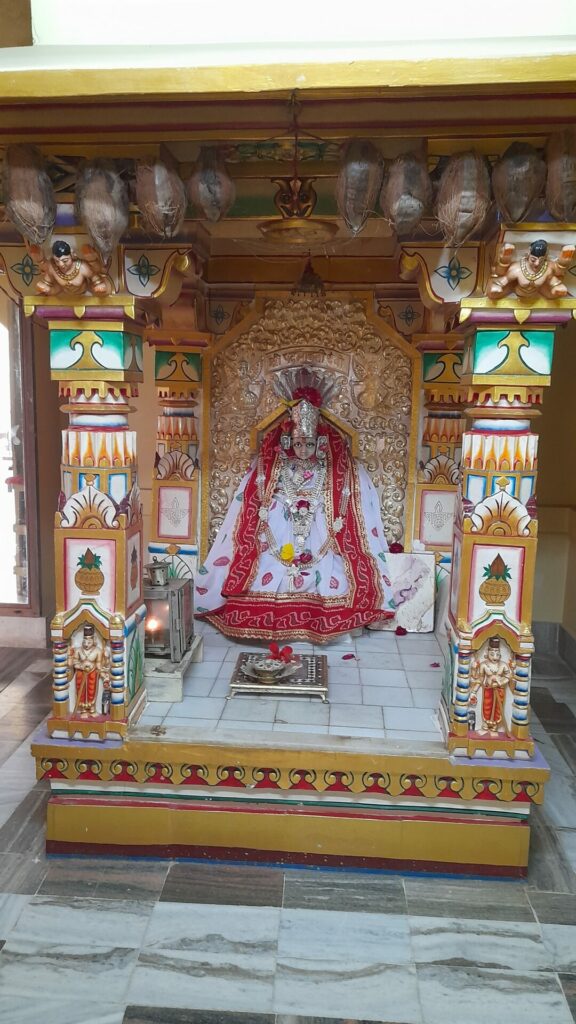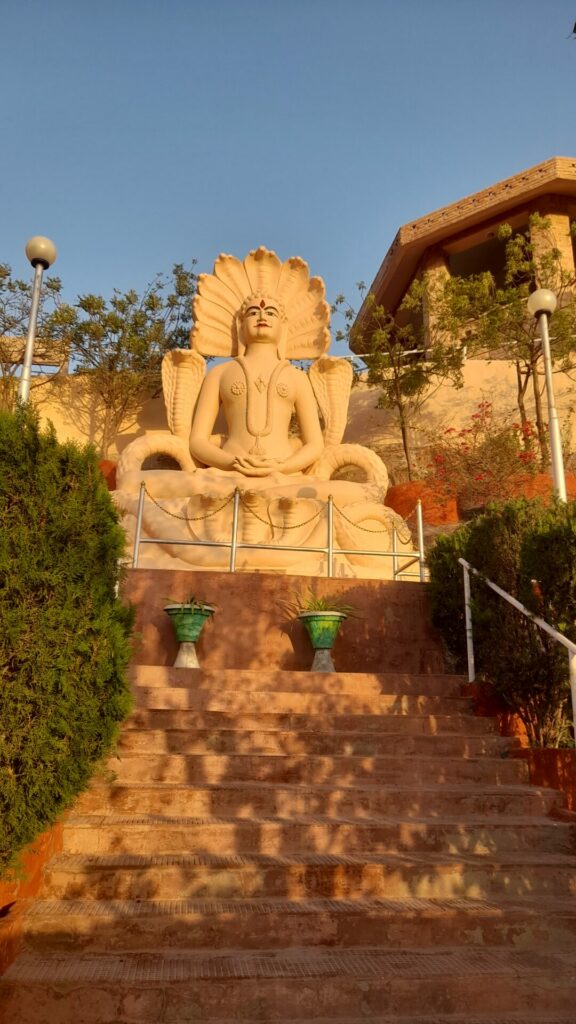Whether the Jain philosophy and the related treatises were written from the perspective of Vedic or Sramanic tradition or whether those were the result of the mélange between the local and the Vedic elements that gradually happened over centuries – these issues raised a lot of debates and a lot of scholastic works have been carried out on these debatable grounds. I have some perceptions about all these, which I want to share with the readers here, but in a nutshell, keeping Lord Mallinatha and Padmavati in the center of the discussion.
By Muhammad TanimNowshad
I have nothing to write for those with sufficient knowledge of Jain philosophy and cosmology. The Jain cosmology perceives a vast time cycle. The wheel of time or Kalpakala has two halves; the first half is Utsarpini, which is the ascending part and the second half is Avasarpini, is the descending part. According to the Jain belief, in each half, 24 Tirthankaras arrive in this world and all of them lead a limited mundane life. In the present time cycle of the Hunda Avasarpini all 24 Tirthankaras already arrived and illuminated mankind and all sentient and non-sentient beings of the universe. Rishavdeve was the first Tirthankara and Mahavira was the last Tirthanakra of the current Avasarpini half. In this half cycle, a very phenomenal Tirthankara arrived and led an unparalleled life and kept a grand footing on earth; he was Trithankara Parshvanatha. He was the penultimate Tirthankara of this progression. Here it is to be noted that because of the diversified comprehension of the penultimate and the ultimate Tirthankars’ teachings, the Jain community later got divided into two sects or denominations; Digambara and the Svetambara. Although the Jain Tirthankars represent the philosophy of the Sramanic traditions; they can be labeled with the Sanatana Dharma or Hinduism. In the Puranas and the Manusmriti we get clear evidence that the Supreme Being was divided into two parts: the Purusha, the male being and the Prakriti, the female being. This female being actuates herself to cause everything in the universe. They appear in the world as Devi Shakti i.e. the Goddess Force. Even in some cases, she turns into the Supreme Being of the universe to her devotees. Sometimes she is the main powerhouse of her male counterpart as we see in many cases of Hinduism. Kali, Durga, Shama are the Powerhouses of Shiva. Saraswati, Gyatri, Brahmai (a Matrika or Mother Goddess) are the powerhouses of Brahma.
Many will say that these three are one person; let us drop it among the visionaries and the sages as they have considered this from their diversified vantage points. However, in the same way, sometimes the adjacent goddess is the protectress of her male counterpart. Lakshmi is the Powerhouse of Vishnu. Durga, Shama and Chandi are some triple personifications or manifestations of the same being – ‘Kali’, according to some Puranas.
When these 4 and other demon-killer goddesses do not kill out of rage, they turn into some creative powerhouses of their adjacent gods; the Hindu mythos coined a term for them – ‘Hladini Shakti’, literally means the power of ecstasy. It means Parvati or Gaudi is the Hladini Shakti of Shiva, while Kali, Durga, and Shama are the consorts of Shiva having their outrageous demon-killing motivation to bring forth peace in all the three worlds, in the puranic parlance ‘Trilokya.’ Vishnu, Brahma and Shiva have formed the major trio of the Hindu cosmology. The other two in most cases belong only to the pertinent Hladini Shaktis, whom I have mentioned as their powerhouses. On the other hand, the power of pleasure and joy frequently turns into the motivation of creativity and creation. They are finally also their consorts.
Jainism shares some common traits of the Hindu Puranic tradition. The Tirthankaras of Jainism have their guardians and the powerhouses and all of them are goddesses or the feminine forces. For example: Chakreshwari is the guardian goddess or Sasana Devi and also the protectress or Yaksi of the first Tirthankara Rishabhanatha, the Jwalamalini the guardian goddess of the eighth Tirthankara Chandraprabhu and so forth. Surprisingly the guardian goddess of the twenty-third Tirthankara is Padmavati; who is the Hindu snake goddess. She is also highly revered by the Jains, although she has some further traits according to the Jain orientation. One thing is mentionable; Parshvanath’s symbol is also a snake.
Padmavati is not any Vedic goddess. In Bengal, Bihar, Assam, and Jharkhand where the marshy lands or the hilly areas are, it is palpable that once snake worship was initiated in these places. Many ethnologists consider her to be a goddess of some aboriginal communities, a tribal goddess. She is familiar to them by the name Jaguli. In Hindu tradition, she is often called Padmavati as her common picture is of a woman sitting on a lotus or Padma. The Jain tradition depicts her in the same way, but the iconographies present different sitting styles in different pictures and the variety is noticeable in different idols of different temples as well. Some traditions say that she is a demigoddess and some say she is Nagini – half serpent and half of her is a female human being.
The matriarchy once reigned here with a high tempo. Still in these parts of India and also in nearby Bangladesh we see the Garos, Santals, and Khasis– all are matriarchal. Hinduism has a super capacity to glean from all traditions and gradually assimilate and incorporate within itself. Padmavati is fairly known as Manasa in the Hindu tradition and she is strongly present in the Mahayana Buddhist tradition too. In all three traditions, she is a healer and heals those people, who are bitten and poisoned by snakes and vipers. In Jainism, she also enhances wealth. Anyway, Jainism revives the feminine force when we discover the female beings as the guardians of the Tirthankaras.

The Mangal-kavyas (the poems of benedictions) of Bengal are famous for the local understanding of Hinduism. Here we trace out the genesis of Manasa. There is a certain Mangal-Kavya name Manasa-Mangal. We discover here that Shiva is the father of Manasa. Some older Hindu Puranas say that the great sage and Vedic hermit Kashyapa was his father. As Manasa never existed in the Vedas, we can guess that the characterization of Shiva or Kashyapa as her father was later days’ interpolation. Hence, we can guess that Jainism is neither completely Vedic nor Sramanic. It accepted a lot of local elements. Even through the establishment of the goddesses as guardians of the Tirthankaras Jainism has somehow revived the feminine force. Therefore, in Jainism, women have been placed in a respectable position. The Sola Sati or the 16 virtuous women are very significant in Jain history. Padmavati is also included among these 16.
In Buddhism, we do not find out any woman who has attained Nirvana. But in Jainism, at least the Svetambara tradition says that Mallinatha, the 19th Tirthankara of this present Avasarpiṇi age, was a woman. Mallinatha means the Lord of the Jasmines. They also call her Malli Devi or Lady Malli. The tradition also narrates that initially, she used to be called Malli bai. Even her previous reincarnation gave her a woman’s life. However, the Jain tradition says that through her meticulous efforts and endeavors she attained Kevala Jnana or omniscience and before that she destroyed the Karmic bondage and became a Siddha or a complete being. Of course, Mallinatha’s gender is a contested issue as the Digambara tradition believes that all 24 Tirthankaras are male. A woman can be a liberated soul but must be reincarnated as a male before that. However, the Svetambara tradition has anyway crossed this parochialism.






